On the Road is a weekday feature spotlighting reader photo submissions.
From the exotic to the familiar, whether you’re traveling or in your own backyard, we would love to see the world through your eyes.
Albatrossity tells me we might have a fifth week of Springtime in Arizona, I guess we’ll have to stay tuned. Not sure what BillinGlendale has planned for us, but we’ll have a couple more days of fun with Captain C, and then we’ll close out the week with the next installment from Mike S with the very long nym.
Albatrossity
Week 4 of the Springtime in Arizona series has some new birds, as well as a couple who have already been introduced, but who are just too good-looking to keep out of the limelight.
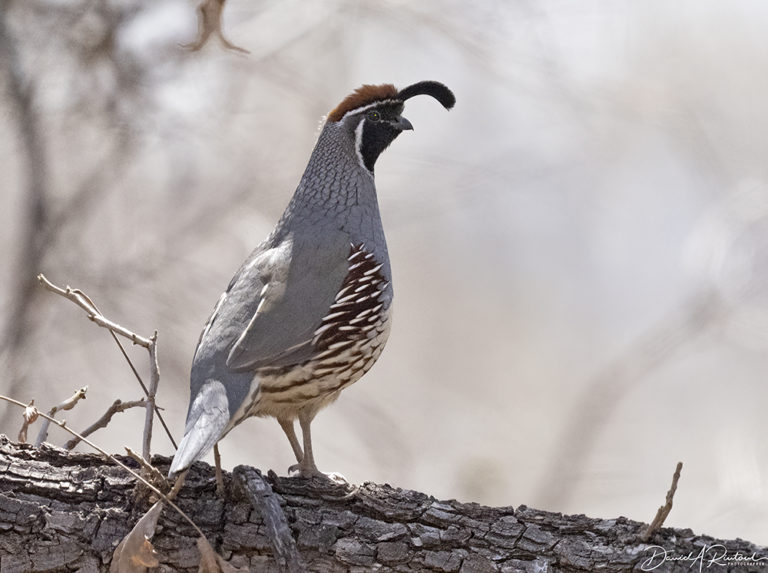
Gambel’s Quail (Callipepla gambelii) are common birds in SE Arizona, and often appear in people’s yards and gardens. This handsome male was perched on a convenient brushpile and overseeing his domain when another male showed up. Much chasing ensued, the rival was vanquished, and he took up an even higher perch in this low tree limb.

Most of the mimids in SE Arizona are thrashers (three regular species and a couple of others that show up as vagrants), but there are also Northern Mockingbirds (Mimus polyglottos), adding to the aural landscape with their diverse songs and calls.
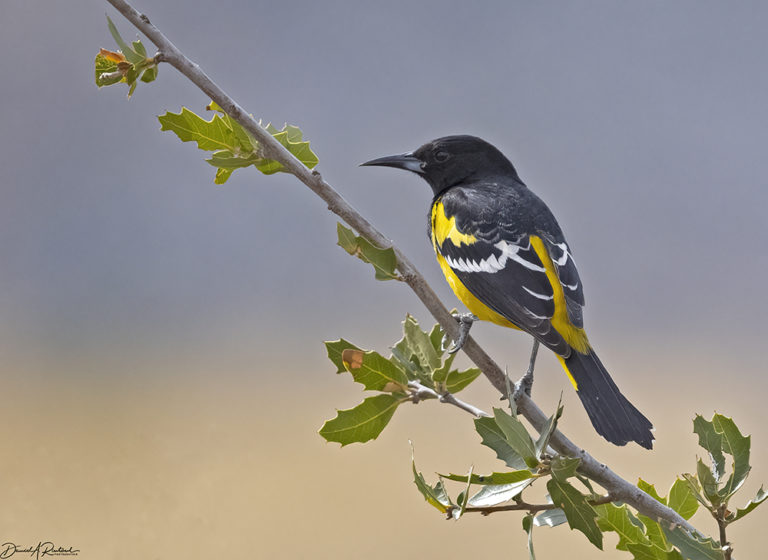
Scott’s Oriole (Icterus parisorum) is one of the earliest orioles to return to these mountains in the spring, after spending the winter in similar habitats across the border in Mexico. They have a lovely liquid song, reminiscent of the song of the Western Meadowlark.
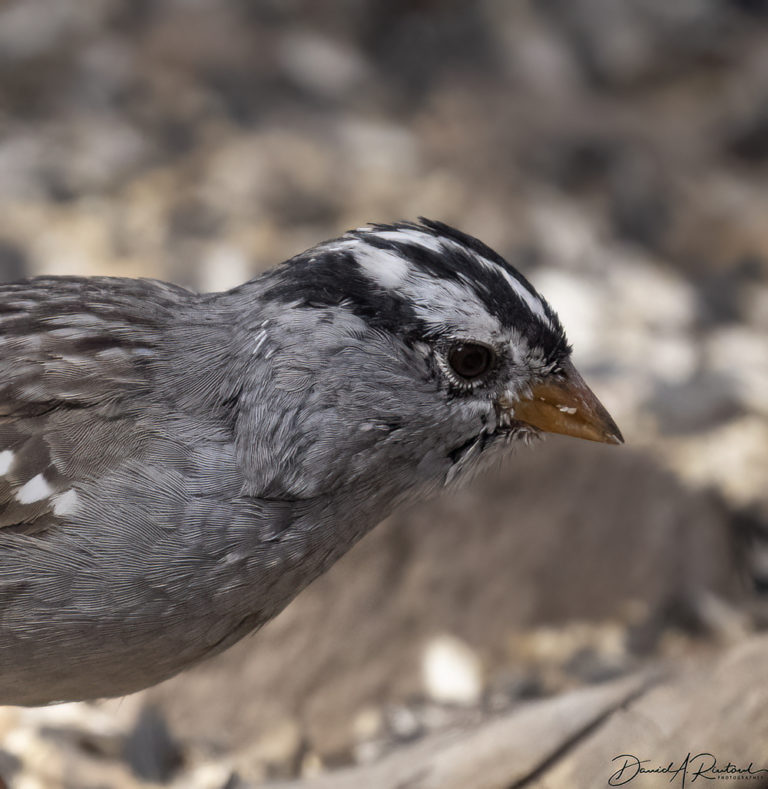
White-crowned Sparrows (Zonotrichia leucophrys) were also still lingering in the brushy hillsides, not quite ready to head north to build a nest and raise some kids. This one is still in molt; you can see several white feather sheaths on the head; those feather sheaths protect the new feathers until they are completely grown out. Birds who are still molting often look a bit unkempt, and this one is no exception.
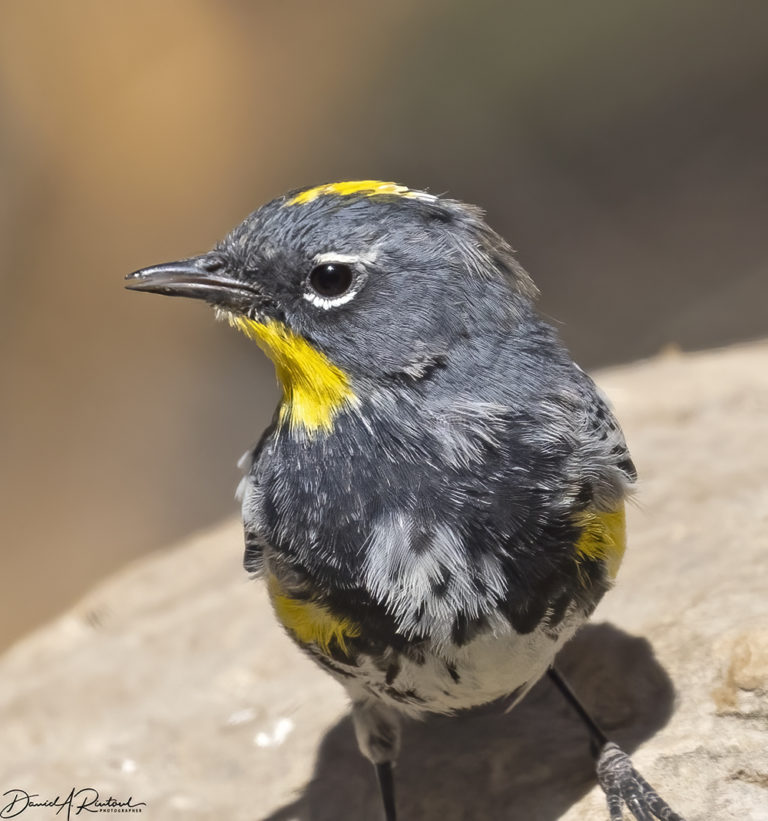
This Yellow-rumped Warbler (Setophaga coronata auduboni), on the other hand is mostly looking very fly in his new spring outfit. There are still a few pin feathers (e.g., at the back end of his yellow crown), but he is mostly done molting and should be heading north soon.

A fine specimen of the green-backed form of the Lesser Goldfinch (Spinus psaltria), watching the feeders to see if a spot will open up for him.

All sparrows are underappreciated IMHO, but the Lincoln’s Sparrow (Melospiza lincolnii) especially so. The subtle beauty of that finely-streaked buffy breast, as well as the broad gray eyebrow, make this bird stand out in the sparrow world.
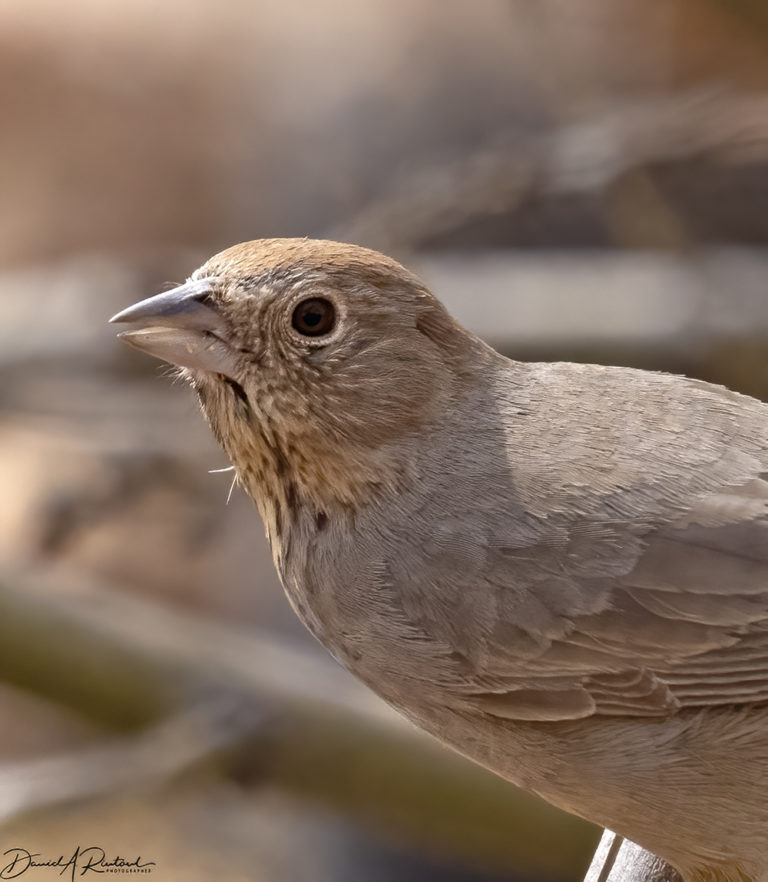
Another re-run, also first showcased in week 2, this Canyon Towhee (Melozone fusca) closeup allows us to see the rufous-tinged crown and dark-streaked “necklace” that help distinguish this bird from its close relative, the California Towhee.
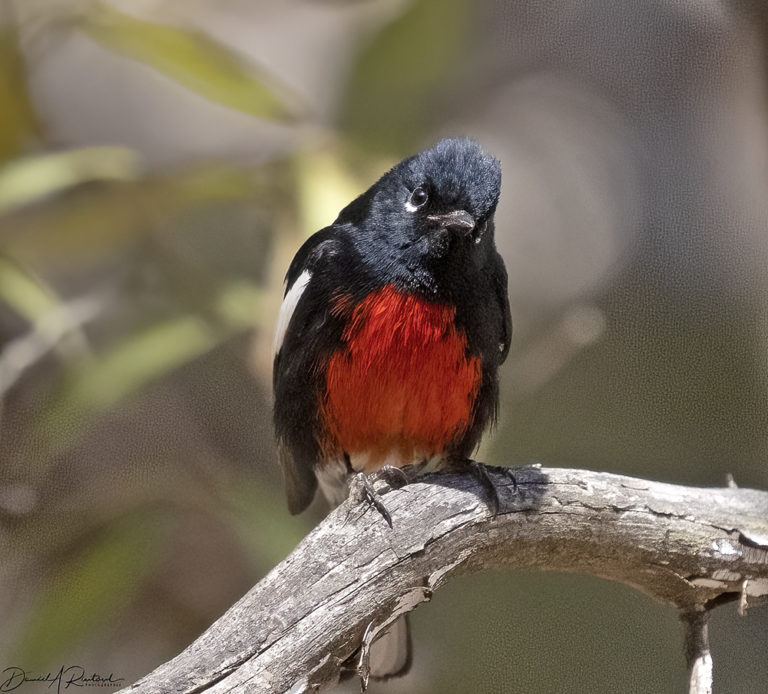
It seems only fitting to wrap up this week’s series with another shot of the Painted Redstart (Myioborus pictus). They don’t often perch in full sunlight, at least in my experience, but when they do, they are a wonder to behold.

p.a.
Thanks for the view of spring; it got down to freezing here last night as winter’s being a hard-ass this year. Even the mid-50 highs come with 15+mph winds lately.
Betty Cracker
Beautiful birds! I love the topknot sported by the Gambel’s Quail in the first photo — reminds me of the flourish on a marching band uniform hat.
We have Northern Bobwhites here in FL, which are also gorgeous birds, but the crest is less impressive.
J R in WV
Always fabulous photos, as if these birbs were runway models posing for the photographers alongside their stage and runway. Thanks again for this wonderful set of photos. My birder friends always thank me for sending them a link to these photos!
Cool but pretty here yesterday, today cold rain all day long… hello, spring!
WaterGirl
I especially love the attitude on the Painted Redstart! He’s got attitude.
With your permission, I might start using him as my image for WordPress posts when I am displeased about some awful thing the Republicans are doing.
WaterGirl
Scott’s Oriole looks hand-painted, and by a pretty steady hand, at that!
Albatrossity
@WaterGirl: You may use any or all of my images for your WordPress purposes. As they say, I’ve got a million of them :-)
SteveinPHX
Thanks again! I saw a verdin in my back yard in suburban PHX yesterday afternoon.
Mike S (Now with a Democratic Congressperson!)
@Betty Cracker: That’s it it’s Drum Major hat look! I’ve always loved all the quails that have the top knots and I could never quite put my finger on that association. They are all great pics but the subtle beauty of a Lincoln’s Sparrow’s plumage makes them always a thrill for me to see, especially if its a good view in morning light.
@WaterGirl: The Painted Redstart is an excellent pic too, although to me he looks more like he’s expressing disappointment like a parent who caught the kids trying to paint the dog with finger paint, again. I’ll have to finally get to Arizona some time as this one and several others would be lifers for me.
mvr
Lincoln’s Sparrow is my favorite today. But these are all good.
Thanks!
WaterGirl
@Mike S (Now with a Democratic Congressperson!): Yes, exactly.
It’s a cross between “Really?” “Again” “I have run out of patience” and “You really fucked up this time”.
Yutsano
@Mike S (Now with a Democratic Congressperson!): I feel like a failure now. I have never made the drum major hat association with quail before. Considering my background with marching bands in the past, I really have no excuse.
stinger
Beautiful birds, impressive photography!
TheOtherHank
When I look at the Gambel’s Quail it looks exactly (to my untrained eye) like a California Quail. How does one distinguish between them? Is it a geographic distribution that causes the speciation?
As a former geneticist, two of the hardest questions to answer definitively are “What is a gene?” and “What is a species?”
Mike S (Now with a Democratic Congressperson!)
@WaterGirl: yes, that’s it.
Mike S (Now with a Democratic Congressperson!)
@TheOtherHank: A species is a consensus human opinion, not a fact. That’s why many biologists consider taxonomy an art and not a science.
Pauline
Aww, I so loved seeing that Gambel’s on the front page this morning. It’s one of my favorite birds, and the sight of mom and dad quail leading a string of babies along is just the cutest thing.
Interstadial
Impressive photos. A lot of people don’t appreciate the difficulty of getting good photos of small birds. You need a well-stabilized lens with a lot of magnification, and quick and accurate focus to get the photo before the bird moves which small birds do a lot.
Munira
@WaterGirl: Yes, he looks like he’s thinking, “I’m really disappointed in you, sir.”
StringOnAStick
@TheOtherHank: California Quail and Gambel’s quail are very similar in size and a little less so in color. According to my Sibley’s field guide, location of where you see them is key; Gambel’s are Northern Mexico up to the four corners area, and California Quail are from Baja California up through WA and just into BC. Albatrossity was in the right range for Gambel’s when he took his lovely photo. It gets tricky in Western Colorado, where the ranges overlap a bit.
I love seeing them here in central Oregon and a big part of the total landscape rebuild I’m doing here is to create more habitat for them and other birds and pollinators
Albatrossity
@StringOnAStick: @TheOtherHank: Gambel’s (both sexes) also have a creamy patch on the belly, and the males have a black patch right below that.